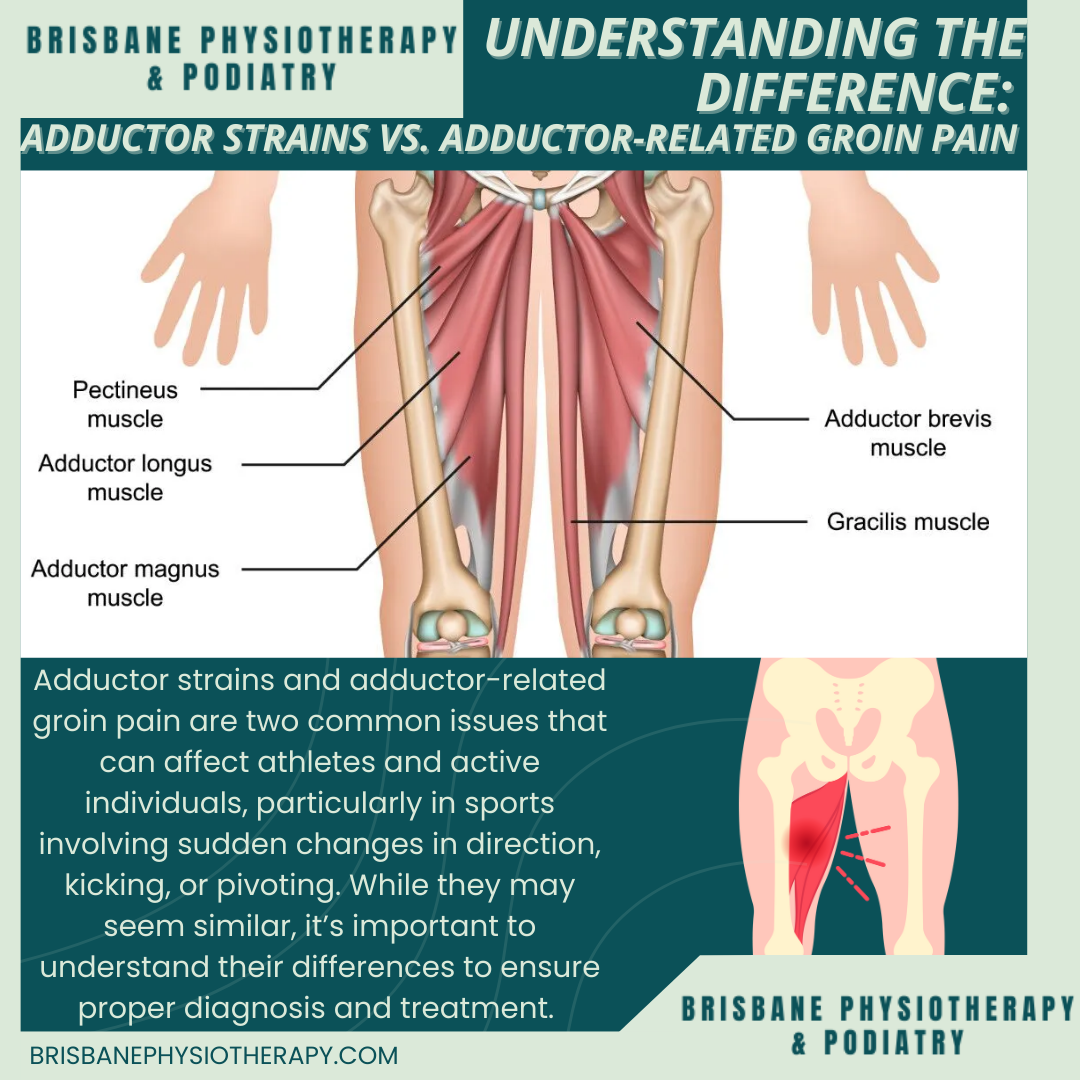Adductor Strains vs. Adductor-Related Groin Pain: Understanding the Difference
Adductor strains and adductor-related groin pain are two common issues that can affect athletes and active individuals, particularly in sports involving sudden changes in direction, kicking, or pivoting. While they may seem similar, it’s important to understand their differences to ensure proper diagnosis and treatment. This post explores the distinctions between adductor strains and adductor-related groin pain, and how physiotherapy can play a role in recovery.
What Are Adductor Strains?
An adductor strain refers to an injury involving the muscles of the adductor group in the inner thigh. The adductors consist of five muscles: the adductor longus, adductor brevis, adductor magnus, gracilis, and pectineus. These muscles are responsible for pulling the leg toward the midline of the body and stabilizing the pelvis during various movements.
A strain occurs when one or more of these muscles is overstretched or torn, often as a result of high-impact activities or sudden, forceful movements like sprinting, kicking, or changing directions quickly. Symptoms of an adductor strain typically include sharp pain in the inner thigh, swelling, bruising, and difficulty moving the leg.
Muscle Injury Grading
The British Athletics Muscle Injury Classification provides a detailed grading system for muscle injuries:
Grade 0: No structural muscle damage but with discomfort or tightness, often without significant imaging findings.
Grade 1: Small muscle fiber tears with minimal loss of strength and function.
Grade 2: Partial muscle or tendon tear, causing significant pain and functional impairment.
Grade 3: Extensive muscle or tendon tear, leading to major function loss. Usually greater than 50% cross sectional area or 15cm in length.
Grade 4: Complete rupture of the muscle or tendon, requiring a prolonged recovery, and in some cases, surgical intervention.
In addition to grading, injuries are further classified based on their location and structure:
Type A (Myofascial): Injuries affecting the muscle belly, typically associated with lower-grade strains.
Type B (Musculotendinous): Injuries affecting the junction between muscle and tendon, often found in moderate-grade strains.
Type C (Intratendinous): Injuries involving the tendon itself, usually seen in severe cases , potentially leading to ruptures.
This classification system helps clinicians diagnose and treat injuries based on their severity and location.
What Is Adductor-Related Groin Pain?
Adductor-related groin pain refers to discomfort or pain felt in the groin area but is not always caused by an injury to the adductor muscles themselves. Instead, this condition often arises from irritation, inflammation, or dysfunction in the adductor tendons where they attach to the pelvis. The pain can be triggered by repetitive strain or overuse, such as in athletes who perform frequent kicking motions, like soccer players or martial artists.
Unlike adductor strains, adductor-related groin pain is more often associated with chronic, nagging discomfort rather than sudden, acute pain. It is often felt as a dull ache in the groin or inner thigh that worsens with activities like sprinting, twisting, or squatting. While it doesn’t involve a muscle tear, adductor-related groin pain can still significantly affect mobility and performance.
How Can Physiotherapy Help?
Both adductor strains and adductor-related groin pain benefit from a targeted physiotherapy approach. For adductor strains, physiotherapy typically focuses on reducing inflammation, restoring strength, and improving flexibility. Early stages may involve rest, ice, compression, and elevation (R.I.C.E), followed by gentle stretching and strengthening exercises once healing begins.
In the case of adductor-related groin pain, treatment is focused on addressing the underlying muscular imbalances, tendinopathy, and joint dysfunction that contribute to the condition. Manual therapy techniques, strength and mobility exercises, and education on proper movement mechanics are often key components of rehabilitation.
In both cases, prevention is critical. Physiotherapists can guide individuals through proper warm-up routines, strengthening exercises, and stretching techniques to reduce the risk of future injury.

